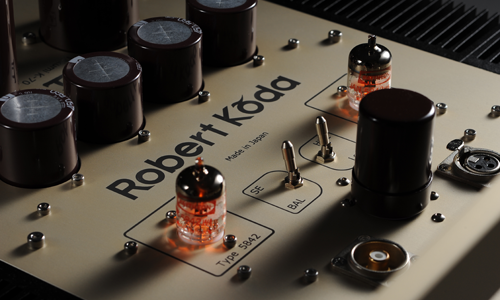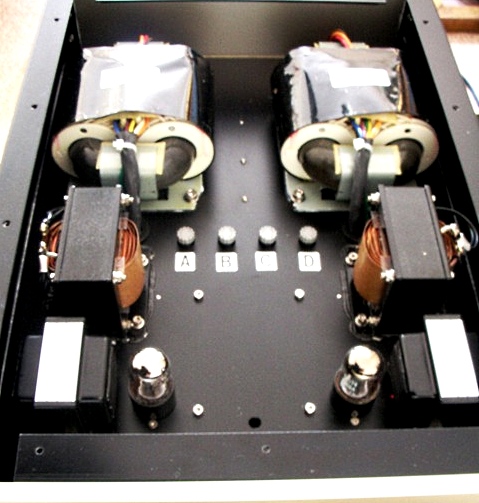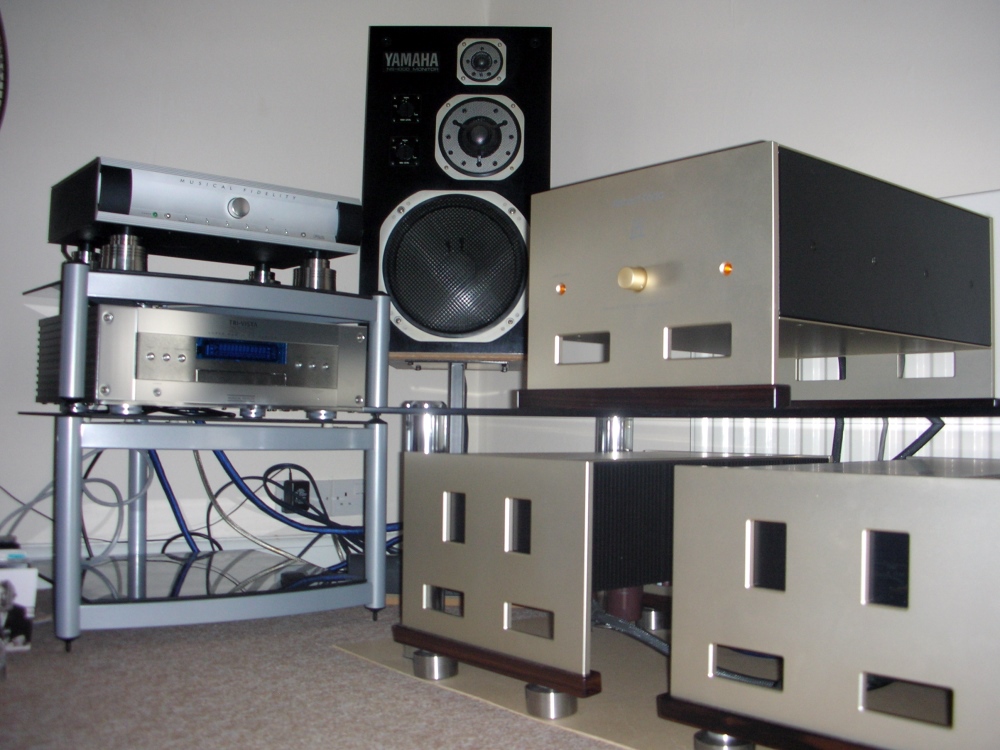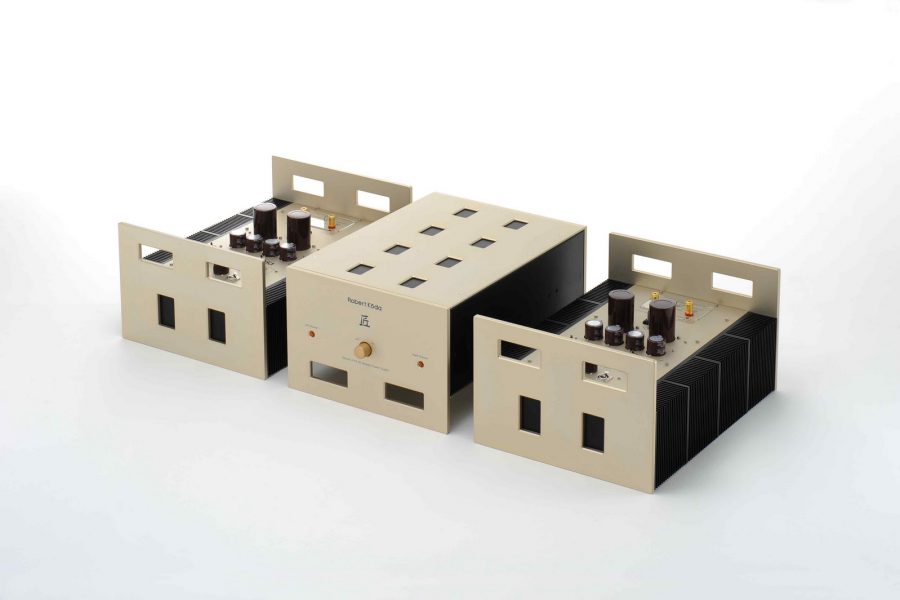There could be many other titles for this review: What does one want from the ‘Ultimate’ power amp? Or: I want everything from an ultimate system – and I will know what that is when I hear it! Or: Who cares about the system – Listen to the music!
Any component, which delivered ‘everything’ would signal the end of the journey of discovery in Hi- Fi. Sometimes it is ‘better’ to travel than arrive at the end, but what would it be like if you finally found musical nirvana, and with the equipment you already had!
Interesting how just one component can answer so many questions!
The Koda Takumi K70 Power Amplifier – a 70W Single Ended Class A1 hybrid power amplifier in three boxes – has liberated my enjoyment of music through allowing me, sonically, if not visually, to forget about the HI-Fi, for the K70 is a major statement physically and financially! As a trusted source of ‘pure’ power it has become, very quickly, a diagnostic tool to tell me how good my other components can or could be in association with it. System building has just become so much easier.
My previous systems have revolved around finding a companion amplifier to the Yamaha NS1000M Loudspeaker. Various Musical Fidelity models became favoured from the F19 Power Amp with its Solid State Bi Mode operation of Class A 75W/Push Pull 300W High Power Mode to the Hybrid KW500/PSU with its massive current to drive the ‘brutish’ 12” woofers of the Yamaha’s. I had convinced myself that high current was the key, not massive wattage!
The K70 is an alternative argument that frankly I cannot fault. Its’ DC Philosophy and Configuration works so well that it is unarguably one of the greatest power amps ever produced and one that I would have no hesitation buying if only I had £35K to spend! This is the current price, in my view, of musical solace. Every evening I come home and ‘fire up’ the K70’s as I would have once done with the TV. It has changed the way I relax and I suggest that in any system it will work its way into your heart.

There is no ‘magic’ at work here but instead a total, absolute engineering genius who, because of the amp’s lack of compromise, explains that to be the best it can only be made from the best, and if that is not available then it has to be invented! Robert Koch:
“One thing I have learned from the K70 is that there are no short cuts. I try to bend my head around this to find ways to build much cheaper amplifiers that can be as satisfying as the K70 but always seem to come back to realising while there may be ‘smart moves’ there are no short cuts”. Un–impressed with the over consumerism of the world we live in, Robert Koch or Koda (read the interview) is committed to producing the finest quality: “We therefore build our products to last and persevere to grow the roses of success from our mistakes”.
Of course, one has to be clear in ones own mind of what one wants from musical reproduction, and for me ‘sound reproduction’ is not enough: I must experience the emotional intent, phrasing and ‘space’ created, interpreted, by the musician. My ‘Klipschorns’ showed me that bass need not be there constantly but should strike with clean, deep transients when required; not an ever present attention seeker, as is so common the case in lesser Hi-Fi.
The revealing nature of the Yamaha’s regarding the quality of associated equipment struggling to drive them, is a reason why the Yamaha’s are so misunderstood. However, the K70’s brought the Yamaha’s qualities seamlessly to the fore with movements of ‘Seismic Bass‘ such as on the Lars Danielsson SACD ‘Libera Me’(ACTSACD 9800-2). The disc revealed subsonics never heard of before. It is all too easy to be fooled that High Fidelity is a show of sonic fireworks but until I heard the K70 ‘detonating’ bass frequencies through the Yamaha’s I realised I had never experienced their true potential … I always knew they were good but never at this sublime level of excellence.
Robert Koch: “One other particularly interesting aspect of the K70 is its unusual ability to ‘sit’ very comfortably with reactive, so called ‘difficult to drive’ loudspeakers. Many such speakers fail to win over the hearts of the listener because of the pressure they place on the amplifier often results in the amplifier producing a below par sound that masks any good the speaker might be capable of doing. The design of the K70 is very much focused on this point, noting that in reality, absolute power, wattage or high current capability, as accepted by the typical audiophile, are not valid indicators of either an amplifiers ability to possess control, dynamics, grip or any other measure of sound quality.”

The Yamaha’s are stated to go down to 20Hz but ‘Hearing is Believing!’ Even at modest levels. The Beryllium dome midrange and treble units of the Yamaha’s are notoriously fast and transparent and combined with the almost ‘ruler flat’ response of the K70’s. One could be mistaken into thinking that the sound might be somewhat bland and clinical but if it requires that we start to reassess exactly what measurements mean in terms of audio performance and delivery, then so be it.
With the K70 there is no need to question what is happening and why, one merely accepts the beguiling quality of the sound, suspends disbelief of the stereo system format, and is drawn into the ‘pools’ of shimmering musical sensations to let go of what ifs’, and just accept that one is involved through listening to the real ‘magic’ of music and its expression across all genres.
Talking with Razwan of Amplitune, sole UK distributor, the fundamentals of what is Hi-Fi and what it is that one seeks in the pleasure of listening to music, proved to be most illuminating. It is possible to make products so revealing, so transparent that one can hear the A-B push-pull of transistors switching on and off. As we seek musical Nirvana we must be conscious of hearing so far into the music that what is heard is beyond the intention of the artist, the producer and the concept. What can be heard in such revealing systems is the fragmentation into analytical detail of the musical whole. We dare to go close to the edge but must avoid creating components that shatter the illusion of stereo musical reproduction. Instead of a technical dogma pervading our thoughts, a direct emotional bond must be sought through the spirit of the design and designer to the heart of the artistic performance. It is this care for liberating the spirit of the music that Robert Koch of Koda has created a power source, a beating heart that must be the foundation building block upon which to construct a system of sublime effortlessness. Musicians breathe, are alive and vital in their belief in bringing aural pleasure to those who think to listen.
Imagine the power station proportions of the Takumi K70 before you. You approach and turn the function knob to “on”. Instantly, a ‘thrum’ of power; reducing to a purr, almost inaudible. Through placement of a damper on the DC reactor there is an audible reduction of purr; any box will resonate; the cartouche damper feels right in it’s’ placement. See it as an offering to the Gods of Music. This is a Zen-like statement.
Now imagine a cold ‘Lava Lamp’, the coloured oil dormant at the bottom of the vessel. Now imagine the sound of the K70 from cold, like the Laver Lamp, rather of one state colourful but as it warms up it rises and falls in a pure 3-dimensional ‘liquidity’ of motion. After about two hours of warm up this is how the K70 sounds: free to rise and fall beguilingly, fascinating the listener as one would stare at a hot laver lamp, mesmerised.
I am not sitting here thinking about what ifs. This amplifier is a statement made in total confidence, although in three parts. It is one, in what is expected of it and what it delivers. So much so that I want to talk more about what I am hearing from my Kenobi’s, my OB1’s, simple eight inch FRS that are set free of constraint. I am hearing what they are totally capable of… As so it will be for many systems to finally realize their full potential because the heart is right, natural, not being there just as an effect upon the whole.
The K70 by raising its own standards elevates every component associated with it. The Tri-Vista SACD needs no introduction as it has become an iconic machine of staggering lucidity but there was some trepidation in using the F22 in such elevated company. But linked through Be Yamamura XLRS and speaker cables I have only just learnt to relax and stop worrying about the Hi Fi. Instead I bathe in the 3 dimensional ambiance presented in front of me.
Subjectively, headroom increased dramatically and a natural tone pervaded the performance; no attention seeking bass but a warmth, a beguiling presence of musicianship that was embraceable like a welcome friend.
The K70 eases the mind over memories of a particular system sound. Night after night it just gets better. Almost approving of what it is asked to play. So much so that an evil temptation has grabbed this listener in trying to find something it does not like. Is it too perfect? Can its presentation be trusted? Or is it an undeniable fact that one has never really heard ones collection before the advent of the K70’s radical philosophy?
My electrics in the apartment are typically noisy: light switches, fridge freezers etc . The K70 DC Reactor dismissed these problems at a stroke. What some reviewers have commented upon is the DC reactors ‘Purr’ which has been tamed by utilising a RS Damping device supplied by Amplitune plus an additional weight used by myself to fine tune ‘out’ the problem to achieve a most satisfactory aesthetic and sonic solution. With the ‘Ando’ architectural style of the monoblocs proportions and the superb finish in absolute terms it is a satisfying act to interact with the DC Reactor in this way – once only – to achieve total ‘ZEN’ for sighting the K70, a fit and forget activity once more focussing the mind, not on the Hi–Fi but on listening to the music!
The K70 is designed to steer the listener into a ‘Midas Touch’ situation, rather than a sound being exclusive to a selection of a few tracks of limited complexity. I am no musician but the K70 allows me to differentiate almost unconsciously between nylon strings being struck, plucked or strummed as opposed to wire ones. It allowed me to appreciate the ‘collage’ of multi-layered tracks laid down in the studio, whilst never losing cohesiveness of the idea!
I don’t have to try to think about the sound – a tiring activity with lesser components. The Takumi K70 is almost sinful in the way one indulges in the sound. Every performance is at its best, constantly and without any apology for delivering beautiful soundscapes.
This is a sound one used to only dream of. An undemanding, natural soundscape to listen to, that ebbs and flows like a tide on a shore of contentment. It really begs the question ‘is this perfection?’ Well, if nothing can ever be perfect this creation certainly does not leave me wanting for more insight; more music, well yes, as you will rediscover what you thought you knew about your music collection. Such is the ease with which the K70 elevates all other components connected to it; I am eternally grateful for the genius that is Robert Koda – ‘Maestro’ indeed!!!

Specifications:
DNA: Single Ended Class A1 hybrid power amplifier with separate power supply.
Output power: Greater than 70W. Power delivery maximised for 3 to 7 ohm loads.
Gain: 25.5dB SE in or balanced in, voltage mode. / 10V/mA in current mode.
Input impedance: 30K Ohms, Voltage mode, 50 ohms current mode.
Output impedance: Less than 0.07 ohms 20 Hz to 20Khz.
Signal to Noise Ratio: Greater than 115dB A weighted at nominal output. / Greater then 97dB A weighted at 1W/8 ohms
Power response: Less than 5Hz to greater than 200KHz.
Power consumption: 1000 Watts at any volume into any load.
Size: 380mm wide, 256mm high, 500mm deep (each of 3 units)
Weight: Power supply: 40Kg / Mono amps: 20Kg each
Operating environment: Operating temperature 0 to 35 degrees Celsius. Altitude sea level thru 3000m above sea level. Storage temperature –20 to +50 degrees Celsius.








